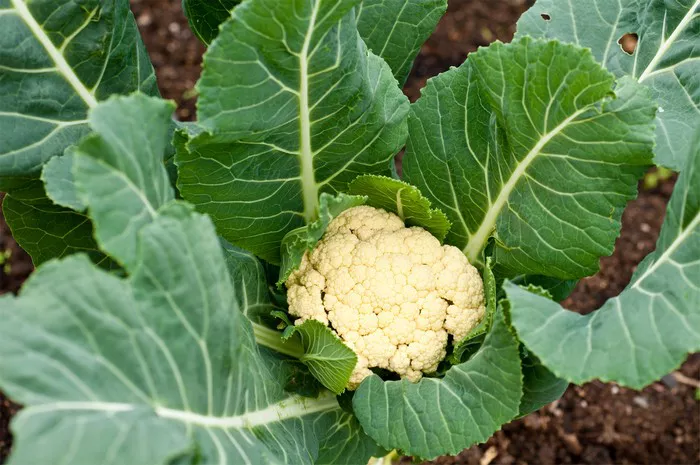Cauliflower (Brassica oleracea var. botrytis) is a versatile and nutritious vegetable that belongs to the cruciferous family, alongside broccoli, cabbage, and kale. Renowned for its dense, compact head of curd-like florets, cauliflower is cultivated worldwide in a variety of climates. Understanding the growth process of cauliflower is essential for farmers, gardeners, and consumers alike. In this article, we delve into the intricacies of how cauliflower grows, from seed to harvest, covering cultivation practices, environmental requirements, and common challenges.
1. Seed Germination:
Cauliflower cultivation typically begins with the germination of seeds. Cauliflower seeds require specific conditions to sprout successfully. Optimal soil temperature for germination ranges from 60°F to 70°F (15.5°C to 21°C). Sowing seeds too early in cold soil can lead to poor germination rates. Seeds should be planted approximately ¼ to ½ inch deep in well-prepared, fertile soil. Adequate moisture is crucial during germination, but excessive water can cause rotting. Germination usually occurs within 5 to 12 days, depending on environmental conditions and seed quality.
2. Seedling Development:
Once seeds germinate, they give rise to seedlings that require careful nurturing. Proper spacing between seedlings is essential to prevent overcrowding, which can lead to competition for resources and stunted growth. Seedlings should be thinned to maintain an optimal spacing of around 18 to 24 inches (45 to 60 centimeters) between plants. Adequate moisture, sunlight, and nutrients are crucial for healthy seedling development. Providing a balanced fertilizer or organic amendments can promote vigorous growth and strong root development.
3. Vegetative Growth:
After the seedling stage, cauliflower plants enter a phase of vegetative growth characterized by leaf expansion and the development of a sturdy stem. During this stage, cauliflower plants require ample sunlight and consistent watering to support robust growth. Mulching around plants can help retain soil moisture and suppress weed growth, ensuring optimal growing conditions. Regular monitoring for pests and diseases is essential to prevent damage that can hinder plant growth and reduce yields.
4. Head Formation:
The hallmark of cauliflower growth is the formation of the edible head, also known as the curd or crown. Head formation is influenced by various factors, including genetics, environmental conditions, and cultural practices. Cauliflower heads develop best under cool temperatures, typically between 60°F to 70°F (15.5°C to 21°C). High temperatures or fluctuations can disrupt head formation, resulting in poor-quality heads or premature flowering, known as “buttoning.” Providing consistent moisture and fertility throughout the growing season is crucial for promoting healthy head development.
5. Blanching:
Blanching is a cultural practice employed to improve the appearance and flavor of cauliflower heads. Blanching involves the exclusion of light from the developing curd, which prevents chlorophyll production and results in a white or creamy-colored head. Blanching can be achieved through various methods, including tying leaves over the curd, covering the plant with a cardboard collar, or using commercial blanching caps. Proper blanching enhances the aesthetic appeal of cauliflower heads and produces a milder flavor preferred by consumers.
6. Harvesting:
Knowing when to harvest cauliflower is critical to ensure optimal quality and flavor. Cauliflower heads should be harvested when they reach full size but before they become overmature or begin to separate. Signs of maturity include a firm, compact head with tight florets and vibrant coloration. Harvesting is typically done by cutting the head from the plant, leaving a portion of the stem attached. Care should be taken to avoid damaging surrounding foliage or neighboring plants. Harvested cauliflower should be handled gently to minimize bruising and stored under cool, moist conditions to maintain freshness.
7. Post-Harvest Handling:
Proper post-harvest handling is essential for preserving the quality and shelf life of cauliflower. After harvesting, cauliflower heads should be cleaned to remove debris and soil particles. Excess moisture on the surface should be dried to prevent rotting during storage. Cauliflower can be stored in perforated plastic bags or containers in the refrigerator, where it can remain fresh for up to two weeks. Alternatively, blanched cauliflower heads can be frozen for long-term storage, retaining their flavor and nutritional value.
Common Challenges in Cauliflower Cultivation:
Despite its popularity, cauliflower cultivation is not without challenges. Several factors can impact the growth and productivity of cauliflower plants, including:
1. Pest and Disease Pressure: Cauliflower is susceptible to various pests and diseases, including aphids, caterpillars, clubroot, and downy mildew. Implementing integrated pest management (IPM) strategies and practicing crop rotation can help minimize pest and disease pressure.
2. Environmental Stress: Extreme temperatures, drought, or excessive rainfall can stress cauliflower plants, leading to reduced yields or poor-quality heads. Providing adequate irrigation and implementing shading or row covers during hot weather can mitigate environmental stressors.
3. Nutritional Deficiencies: Cauliflower plants require balanced nutrition to support healthy growth and development. Soil testing and amendments can help correct nutrient deficiencies and optimize soil fertility for cauliflower cultivation.
4. Head Disorders: Head disorders such as hollow stem, buttoning, or riciness can occur due to genetic factors, environmental stress, or cultural practices. Selecting suitable cauliflower varieties and implementing proper cultural practices can minimize the risk of head disorders.
Conclusion
Understanding the growth process of cauliflower is essential for successful cultivation and harvest. By providing optimal growing conditions, managing common challenges, and implementing appropriate cultural practices, growers can produce high-quality cauliflower with desirable traits for culinary use and consumption. Whether grown commercially or in home gardens, cauliflower remains a versatile and nutritious vegetable cherished for its flavor, texture, and culinary versatility.


